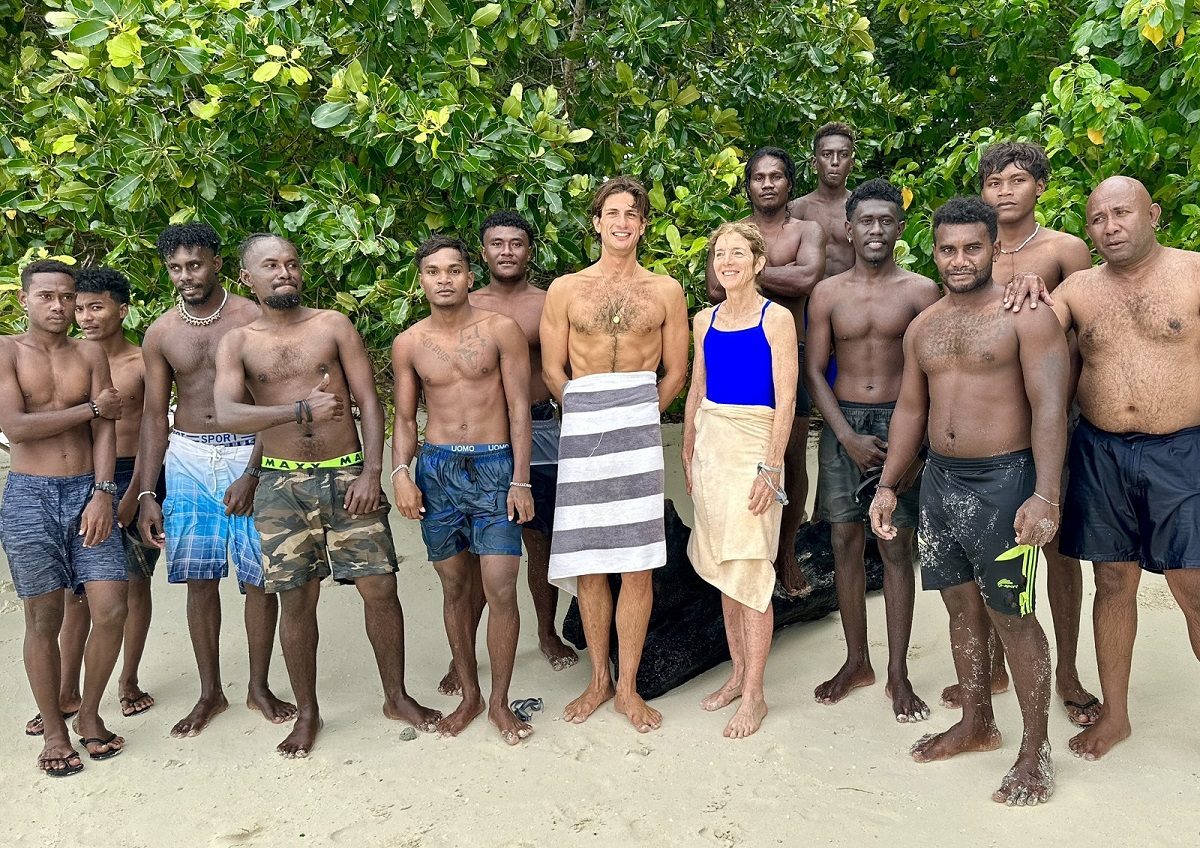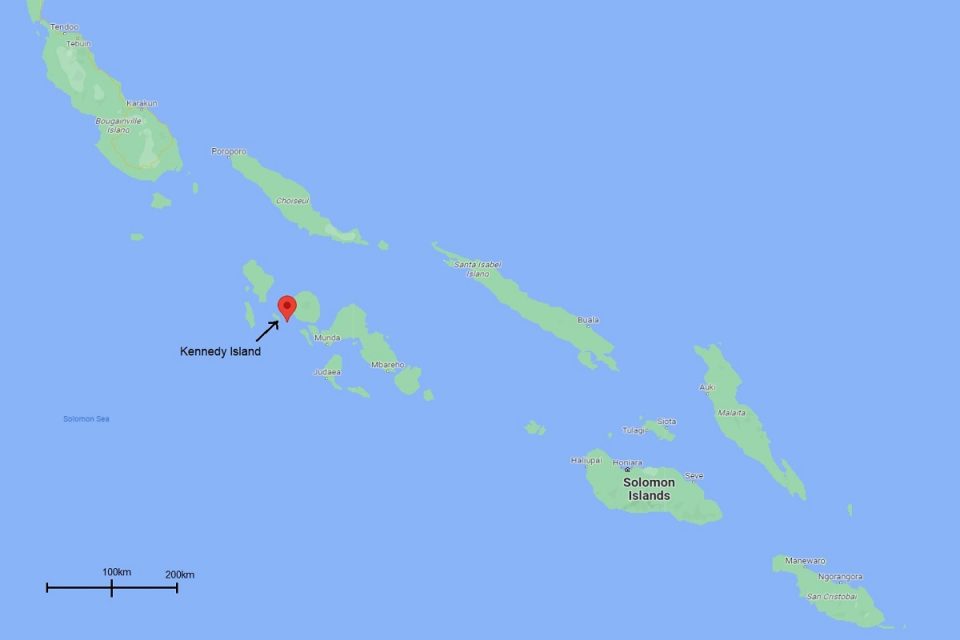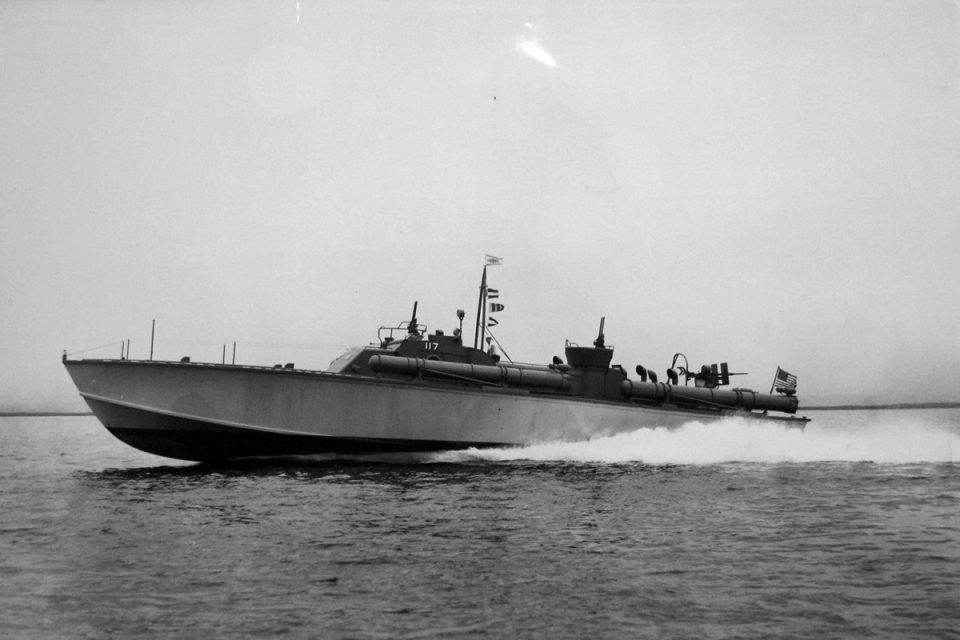
Ambassador Kennedy and her son Jack pose with descendants of the Solomon Scouts who saved her father’s crew 80 years ago. Photo: US Embassy in Australia.
Early on 1 August, 1943, a small US Navy torpedo boat was sunk when it was rammed by a Japanese destroyer in a remote area of the western New Hebrides, known today as the Solomon Islands.
That torpedo boat’s serial number was PT-109 and its skipper was a then fresh-faced Lieutenant John (Jack) F Kennedy, who would become the 35th President of the United States.
On Wednesday, 3 August, 2023 – 80 years after PT-109 was sunk – the daughter of John F Kennedy, the US Ambassador to Australia, Caroline Kennedy, visited the Solomon Islands to commemorate her father and the crew of PT-109’s exploits.
The PT-109 and two other torpedo boats were tasked with disrupting what had become known as the ”Tokyo Express”, a constant run of Japanese shipping that would use the cover of the numerous small islands of the western New Hebrides to resupply its outposts around the larger islands of the group further to the southeast.
About 2:30 that morning, PT-109 was rammed forward of amidships by the Japanese destroyer Amagiri, in effect splitting the flimsy 80-foot-long wooden boat in two. While most of the crew were thrown into the water in the initial collision, Kennedy ordered the remainder to abandon ship as it caught fire.
It’s now history that, while two of the crew of 13 were never found, the remainder had clung to wreckage and were able to make it to a small island named Plum Pudding Island – today known as Kennedy Island – with Kennedy having to rescue some who either could not swim or had been injured in the ramming.
Over the next couple of nights, Kennedy – who had been a strong swimmer at Harvard – swam numerous times between Plum Pudding and the nearby Naru and Olasana islands through treacherous waters with strong currents, sharks, jellyfish and coral reefs to look for help. The area between the islands was a lair used by the PT Boats, but his squadron had returned to base to replenish its fuel and stores.




It wasn’t until 6 August that he was able to get a written message to an Australian Coastwatcher and then to US forces via two ”Solomon Scouts” – a band of brave islanders who acted as spotters to report Japanese shipping to the allies – and he and his crew were rescued on 8 August.
During Ambassador Kennedy’s visit 80 years later, she visited family members of some of the original Solomon Scouts who had helped the crew, and presented them with the last two PT boat pins she had in her collection that had been handed down to her by her father.
The 65-year-old Ambassador and her son, 30-year-old Jack Schlossberg, also commemorated the anniversary by re-creating the swim across the Burkitt Strait between Kennedy Island and Olasana Island, a distance of some 1.5 km.
Eighty years ago, President Kennedy swum between Plum Pudding Island (now Kennedy Island), Naru Island, and Olasana Island — multiple times, at night — to save himself and his PT-109 crew.
Yesterday, Ambassador Kennedy and her son, Jack, recreated the swim to commemorate the… pic.twitter.com/RSvgjHDv40
— U.S. Embassy Australia (@USEmbAustralia) August 2, 2023
“It gave me a renewed appreciation of the heroism of my father and his crew, and the Solomon Scouts,” Ambassador Kennedy said in a small ceremony held with the Scouts’ descendants. “It was so meaningful to do this with my son, Jack.
“My father owed his life to their courage, their willingness to put themselves at risk, and to serve their country in the battle for freedom.
“They belonged to a complex network of brave and highly skilled men operating behind enemy lines to gather intelligence, provide information, conduct insurgency operations, and rescues.”
She said the Solomon Islands would always hold a special place in her heart.
“My son and I are honoured to be able to thank you in person for what your fathers did 80 years ago,” she said.
“This place made President Kennedy the man he was.
“It is where he first experienced the responsibility of leadership – the knowledge that the lives and safety of his crew depended on him. He risked his own life to save theirs. That became the way he lived his life.”












